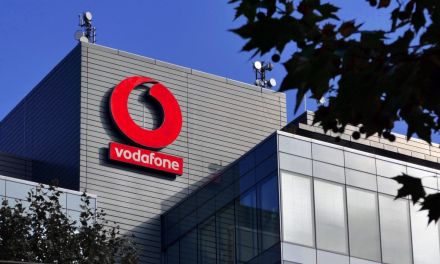Viewpoint
Futureproofing 5G with 6GHz spectrum
Mid-band spectrum – the frequencies in the 1GHz–6GHz range – have always been of paramount importance to 5G. Offering the perfect blend of coverage, speed, and capacity, mid-band spectrum provides operators with a cost-effective 5G deployment option that is still capable of delivering all the latest 5G experiences for their customers.
The availability of additional mid-band spectrum, however, is growing slim. Mobile data consumption is growing steadily as is the proliferation of new data-hungry 5G use cases, both in the enterprise and consumer segments. The GSMA currently estimates that each country will require around 2 GHz of mid-band spectrum by the end of the decade – far more than is currently available to the world’s mobile operators.
To this end, the International Telecom Union (ITU) recently announced at the World Radiocommunication Conference 2023 that it had allocated new spectrum bands to be used for 5G: the 470–694 MHz and 3.3–3.8 GHz bands in the EMEA region, and the 6.425–7.125 GHz band for use globally. With this new spectrum, the ITU said it would be easier to provide a ‘clear roadmap’ for the evolution of 5G and the development of its next iteration: 5G-Advanced.
Of these new spectrum bands, the 6GHz spectrum is by far the most interesting. With technical conditions now globally harmonised, this additional spectrum will provide operators with the midband capacity they need to further expand their rollout plans.
In fact, operators around the world have been crying out for access to 6GHz spectrum for 5G for some time. According to the GSMA, countries representing roughly 60% of the global population have requested access to this spectrum through various channels.
Similarly, numerous major players in the telecoms ecosystem have been carrying out interoperability tests with this spectrum in anticipation of its allocation. In July last year, TIM Brasil and Huawei, for example, have tested the implementation of 5G within the 6GHz spectrum in Rio de Janeiro from open area to in-building locations, reaching gigabits per second. MediaTek and Ericsson also notably completed 5G NR data calls over 6GHz using a prototype test device from MediaTek and an Ericsson base station in November last year.
With 6GHz now set to become a 5G reality, the path to 5G-Advanced is beginning to clear.
European operators press forward in the search for greater speeds with 5G-Advanced
Europe’s 5G journey so far has been steady. While not achieving same the levels of coverage and adoption seen in countries like China, South Korea, and the US, the rollout has nonetheless been impressive, with coverage exceeding 81% of the European population at the end of 2022. But as the technology continues to mature and new use cases emerge – from extended reality (XR) to broadband IoT – European operators must be careful not to fall further behind their international rivals as focus shifts towards 5G-Advanced (and later 6G).
Naturally, the newly released 6GHz spectrum will play a major role in this journey, as will so-called mmWave spectrum (24GHz–300GHz), both of which offer far greater speeds than is currently available with existent low-band and mid-band spectrum.
Exploration of the increased speeds available from incorporating 6GHz spectrum and mmWave –as well as the adoption of 5G Advanced technology and standards – has already begun. Deutsche Telekom, for example, tested 6GHz transmissions back in September, achieving downlink speeds of 11Gbps, which increased to 12Gbps when bundled with 3.6GHz spectrum. In another example, DNA in Finland conducted their own tests of 5G-Advanced technology late last year, reaching speeds of over 10Gbps on a commercial network.
These are speeds over ten-times greater than currently available over commercial 5G networks, giving operators a wealth of new commercial opportunities, from exciting consumer use cases in the XR space to enhanced Fixed Wireless Access (FWA) propositions delivering a fibre-like experience for home broadband customers.
At a time when most operators around the world are still struggling to monetise 5G effectively, the speed boost delivered by 5G-Advanced could help the technology finally live up to the hype.
10Gbps 5G-Advanced: A commercial reality in 2024?
With testing progressing so rapidly, commercialisation of 5G-Advanced seems imminent, particularly for more advanced 5G nations.
In mainland China, numerous pilot projects leveraging 5G-Advanced are already underway, including glass-free 3D, RedCap, and Internet of Vehicles (IoV) technology. In Hong Kong, HKT have already deployed 10Gbps 5G across an entire business district, as well as using a 5G- Advanced network to support the live broadcast of the Victoria Harbour fireworks show. And, in the Middle East, 10Gbps speeds have already been achieved in countries including Saudi Arabia, Kuwait, and the UAE. In the latter, leading mobile operator du has even demonstrated a 5G-Advanced villa, using FWA to deliver speeds of over 10Gbps throughout the home.
Clearly, the operators desire for rapid 5G-Advanced commercialisation is strong, and this feeling is supported by the wide range of 5G-Advanced products already beginning to come to market. One of the most notable these comes from China’s MeiG, which announced the launch of the world’s first 5G-Advanced FWA solution last year, supporting both sub-6GHz and mmWave spectrum. The company’s related MiFi solution SRT873 and 5G-A ODU solution SRT853MX achieved download speeds of 10Gbps on an experimental network, and uplink speeds of 3Gbps.
While it is still early days for 5G-Advanced, all signs seem promising that customers will be able to enjoy 10Gbps services before the end of 2024.
















